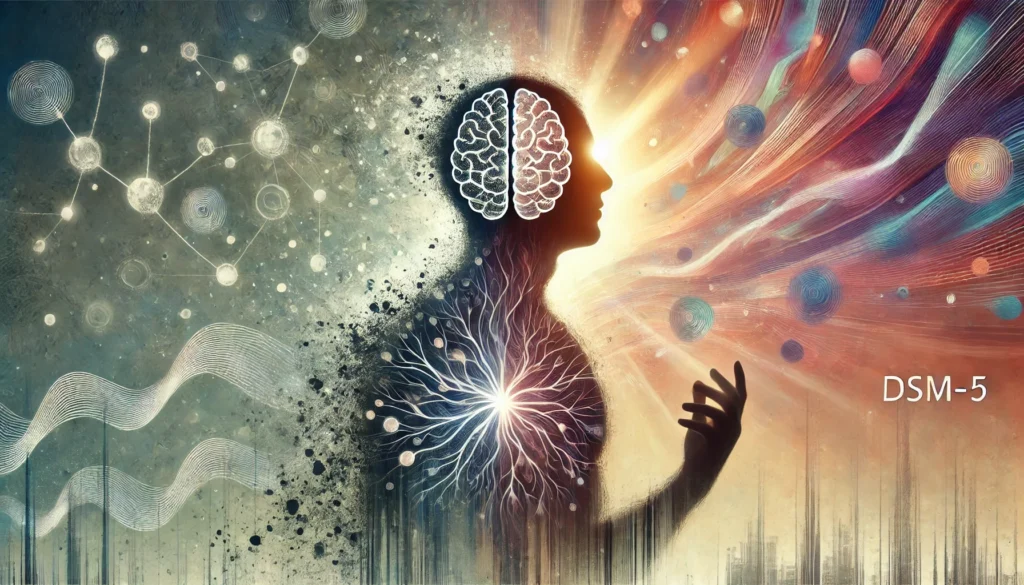Attention Deficit Hyperactivity Disorder (ADHD) is a complex neurodevelopmental disorder that affects both children and adults. The Diagnostic and Statistical Manual of Mental Disorders, Fifth Edition (DSM-5) provides the criteria used by clinicians to diagnose ADHD. Understanding these criteria is essential for health professionals, educators, and individuals seeking clarity about ADHD. Let’s dive into what the DSM-5 says about ADHD and its implications.
You may also like: Enhancing Concentration: Strategies for ADHD
The Evolution of ADHD Diagnosis
The understanding and diagnosis of ADHD have evolved significantly over the years, reflecting advances in research and clinical practice. The journey from early characterizations to the current DSM-5 criteria highlights the complexities of this disorder.
Historical Perspectives
Historically, ADHD was seen primarily as a childhood disorder. In the DSM-II, it was referred to as “hyperkinetic reaction of childhood,” indicating a focus on hyperactivity as a primary symptom. This early understanding limited recognition of the disorder’s broader scope.
The DSM-III marked a significant shift by introducing the term “Attention Deficit Disorder (ADD)” with or without hyperactivity. This change acknowledged that not all individuals with the disorder are hyperactive, broadening the spectrum of ADHD to include those primarily with attentional challenges.
Subtypes and Terminology
With the DSM-IV, the term ADHD was consolidated, and subtypes were introduced: predominantly inattentive, predominantly hyperactive-impulsive, and combined presentation. This categorization provided a more nuanced understanding, allowing for tailored approaches to diagnosis and treatment.
The DSM-5, published in 2013, retained these subtypes but made some crucial updates to the diagnostic criteria. These updates include changes in age of onset and symptom presentation, reflecting ongoing research and clinical insights.
Changes in Diagnostic Criteria
The DSM-5 introduced several important changes to the diagnostic criteria for ADHD. One notable change was the increase in the age of onset from 7 to 12 years, acknowledging that some symptoms may not be apparent until later childhood.
This adjustment in age criteria aligns with research indicating that ADHD symptoms can manifest in diverse ways and at different developmental stages. The DSM-5 also emphasizes the need for symptoms to be present in multiple settings, reinforcing the importance of context in diagnosis.
DSM-5 Criteria for ADHD
The DSM-5 criteria for ADHD provide a structured framework for diagnosis, focusing on core symptoms and their impact on functioning across various settings.
Core Symptoms and Presentation
The DSM-5 outlines two core symptom domains: inattention and hyperactivity-impulsivity. To be diagnosed with ADHD, individuals must exhibit a persistent pattern of inattention and/or hyperactivity-impulsivity that interferes with functioning or development.
Inattention Symptoms
Inattention includes symptoms such as failing to pay close attention to details, difficulty sustaining attention in tasks, and not listening when spoken to directly. These symptoms can lead to significant challenges in academic and occupational settings, where sustained focus is essential.
Other inattentive symptoms involve not following through on instructions, difficulty organizing tasks, and avoiding tasks requiring sustained mental effort. These challenges can impact an individual’s ability to manage responsibilities and complete tasks efficiently.
Individuals with inattention may also frequently lose things necessary for tasks, be easily distracted, and exhibit forgetfulness in daily activities. These symptoms can lead to frustration and misunderstandings in both personal and professional contexts.
Hyperactivity-Impulsivity Symptoms
Hyperactivity-impulsivity encompasses symptoms like fidgeting, leaving seats in situations where remaining seated is expected, and running or climbing in inappropriate situations. These behaviors can be disruptive in structured environments such as classrooms or meetings.
Inability to play quietly, being “on the go,” and talking excessively are also part of this symptom domain. These symptoms can interfere with social interactions and lead to difficulties in maintaining relationships.
Impulsivity symptoms include blurting out answers, difficulty waiting for their turn, and interrupting others. Such behaviors can lead to challenges in communication and social settings, impacting an individual’s ability to engage effectively with others.
Age of Onset and Duration
For a diagnosis of ADHD, several inattentive or hyperactive-impulsive symptoms must have been present before the age of 12. This criterion reflects research indicating that some symptoms may not be noticeable until later childhood.
The increase in the age of onset from 7 to 12 years in the DSM-5 acknowledges the variability in symptom manifestation. This change ensures that individuals who develop symptoms later in childhood are not overlooked in diagnosis.
Early identification of symptoms is crucial for effective intervention and support. Understanding the age of onset helps clinicians and educators recognize ADHD in diverse developmental contexts, facilitating timely support.
Symptom Presence Across Settings
Symptoms must be present in two or more settings, such as at home, school, or work. This requirement ensures that the symptoms are pervasive and not limited to a single context, which could suggest an environmental or situational cause rather than a disorder.
The presence of symptoms across settings highlights the need for comprehensive assessment. Clinicians must gather information from multiple sources, including parents, teachers, and the individual, to ensure an accurate diagnosis.
This criterion underscores the importance of considering environmental factors in the diagnosis and management of ADHD. Understanding the contexts in which symptoms occur can inform strategies for support and intervention.
Impact on Functioning
The symptoms must clearly interfere with, or reduce the quality of, social, academic, or occupational functioning. This criterion emphasizes the functional impairment caused by the disorder, distinguishing it from the occasional inattentiveness or impulsivity seen in the general population.
Functional impairment highlights the real-world challenges faced by individuals with ADHD. These challenges can include difficulties in maintaining employment, academic underachievement, and strained relationships.
Recognizing the impact of ADHD on functioning is essential for developing effective support plans. Interventions must address not only symptom management but also strategies to enhance overall quality of life.
Exclusion of Other Disorders
The DSM-5 requires that the symptoms not be better explained by another mental disorder, such as mood disorder, anxiety disorder, dissociative disorder, or a personality disorder. This exclusion criterion ensures that the diagnosis of ADHD is accurate and not confounded by other conditions.
Differential diagnosis is a critical component of assessing ADHD. Clinicians must carefully evaluate symptoms to rule out other potential causes, ensuring that individuals receive appropriate and targeted treatment.
This criterion underscores the complexity of diagnosing ADHD and the need for thorough and comprehensive evaluation. Understanding the interplay between ADHD and other mental health conditions is essential for effective clinical practice.

ADHD in Adults: DSM-5 Considerations
ADHD is not just a childhood disorder. The DSM-5 acknowledges that ADHD can persist into adulthood, albeit with changes in symptom presentation. For adults (17 years and older), only five symptoms (instead of six) in either or both domains are required for a diagnosis.
Symptom Manifestation in Adults
Adult symptoms often manifest as restlessness rather than hyperactivity. This shift in symptom presentation reflects the developmental changes that occur as individuals transition from childhood to adulthood.
Adults with ADHD may experience difficulty with time management, organization, and goal-setting. These challenges can impact personal and professional life, leading to frustration and decreased productivity.
Understanding adult ADHD requires awareness of how symptoms evolve over time. Clinicians must consider developmental changes when assessing and supporting adults with ADHD, ensuring that interventions are relevant and effective.
Diagnostic Criteria Adjustments
The reduction in the number of symptoms required for diagnosis in adults reflects the recognition that ADHD symptoms may diminish in intensity but still cause significant impairment. This adjustment ensures that adults who continue to experience challenges receive appropriate support.
Accurate diagnosis of ADHD in adults requires a comprehensive evaluation, including a thorough history and assessment of current functioning. Clinicians must consider the cumulative impact of symptoms over time.
Implications for Treatment
The recognition of ADHD in adults has important implications for treatment planning. Adults with ADHD may benefit from interventions such as cognitive-behavioral therapy, coaching, and medication management.
Tailoring treatment to the unique needs of adults with ADHD is crucial for enhancing quality of life. Interventions should address both symptom management and strategies for improving functioning in daily life.

Getting Diagnosed with ADHD
Understanding where to get diagnosed with ADHD is crucial. Diagnosis typically involves a comprehensive assessment by a healthcare professional, such as a psychiatrist, psychologist, or neurologist.
The Diagnostic Process
The evaluation includes a detailed history, clinical interviews, behavioral assessments, and, sometimes, standardized ADHD rating scales. This comprehensive approach ensures that all relevant factors are considered in the diagnosis.
A thorough diagnostic process is essential for accurate identification of ADHD and differentiation from other conditions. Clinicians must gather information from multiple sources to gain a complete understanding of the individual’s challenges.
Choosing the Right Professional
It’s essential for individuals suspecting ADHD to seek evaluation from a qualified professional to ensure accurate diagnosis and appropriate treatment planning. Professionals with expertise in ADHD can provide valuable insights and recommendations.
Selecting the right healthcare provider involves considering factors such as experience, specialization, and approach to treatment. Individuals should feel comfortable and supported throughout the diagnostic process.
Importance of Early Diagnosis
Early diagnosis of ADHD can lead to more effective intervention and support. Identifying ADHD in childhood or adolescence allows for timely implementation of strategies to manage symptoms and enhance functioning.
Awareness of ADHD symptoms and the diagnostic process empowers individuals to seek help when needed. Early intervention can significantly improve outcomes and quality of life for individuals with ADHD.

Implications and Future Directions
The DSM-5 criteria for ADHD provide a structured framework for diagnosis, but they are not without limitations. Some critics argue that the criteria may not capture the full spectrum of ADHD symptoms, particularly those seen in females or adults.
Critiques of Current Criteria
Critics highlight that the DSM-5 criteria may overlook gender differences in symptom presentation. Females with ADHD often exhibit more inattentive symptoms, which can be less disruptive and therefore less likely to be recognized.
Cultural and contextual factors can also influence symptom expression and diagnosis. Understanding these factors is crucial for ensuring that diagnostic criteria are inclusive and applicable to diverse populations.
Advances in Research
As our understanding of ADHD evolves, future editions of the DSM may incorporate new research findings, including insights from genetics, neuroimaging, and longitudinal studies. These advances have the potential to refine diagnostic criteria and improve outcomes.
Research into the neurobiological underpinnings of ADHD is ongoing, offering the possibility of more precise and personalized approaches to diagnosis and treatment. Staying informed about the latest research is essential for clinicians and individuals alike.
Enhancing Diagnostic Accuracy
The goal is to enhance diagnostic accuracy and improve outcomes for individuals with ADHD. This includes recognizing the full range of symptoms and considering individual differences in presentation and experience.
Future directions in ADHD diagnosis may involve integrating new technologies and assessment tools, such as digital assessments and biomarkers, to provide a more comprehensive understanding of the disorder.
Conclusion
The DSM-5 criteria for ADHD offer a comprehensive approach to diagnosing this complex disorder. By understanding these criteria, health professionals can better identify and support individuals with ADHD, and individuals can gain insight into their symptoms and seek appropriate help.
Empowering Health Professionals
Health professionals equipped with a thorough understanding of the DSM-5 criteria can provide accurate diagnoses and effective interventions. This knowledge empowers them to support individuals with ADHD in achieving their full potential.
Supporting Individuals with ADHD
For those seeking diagnosis or support, consulting with qualified professionals and staying informed about the latest research and treatment options is key to managing ADHD effectively. Understanding the criteria helps individuals make informed decisions about their care.
Looking to the Future
As research continues to advance, we can look forward to more nuanced and effective approaches to diagnosing and treating ADHD. Whether you’re a health and wellness coach, science journalist, or biohacker, understanding the DSM-5 criteria for ADHD can empower you to make informed decisions and provide valuable guidance to others.
By staying informed and engaged with the latest developments in ADHD research and diagnosis, professionals and individuals can contribute to a better understanding and management of this complex disorder.
Further Reading:
DSM-5® for Adult ADHD: Diagnostic Criteria
Attention-Deficit/Hyperactivity Disorder
Important Note: The information contained in this article is for general informational purposes only, and should not be construed as health or medical advice, nor is it intended to diagnose, prevent, treat, or cure any disease or health condition. Before embarking on any diet, fitness regimen, or program of nutritional supplementation, it is advisable to consult your healthcare professional in order to determine its safety and probable efficacy in terms of your individual state of health.
Regarding Nutritional Supplements Or Other Non-Prescription Health Products: If any nutritional supplements or other non-prescription health products are mentioned in the foregoing article, any claims or statements made about them have not been evaluated by the U.S. Food and Drug Administration, and such nutritional supplements or other health products are not intended to diagnose, treat, cure, or prevent any disease.


